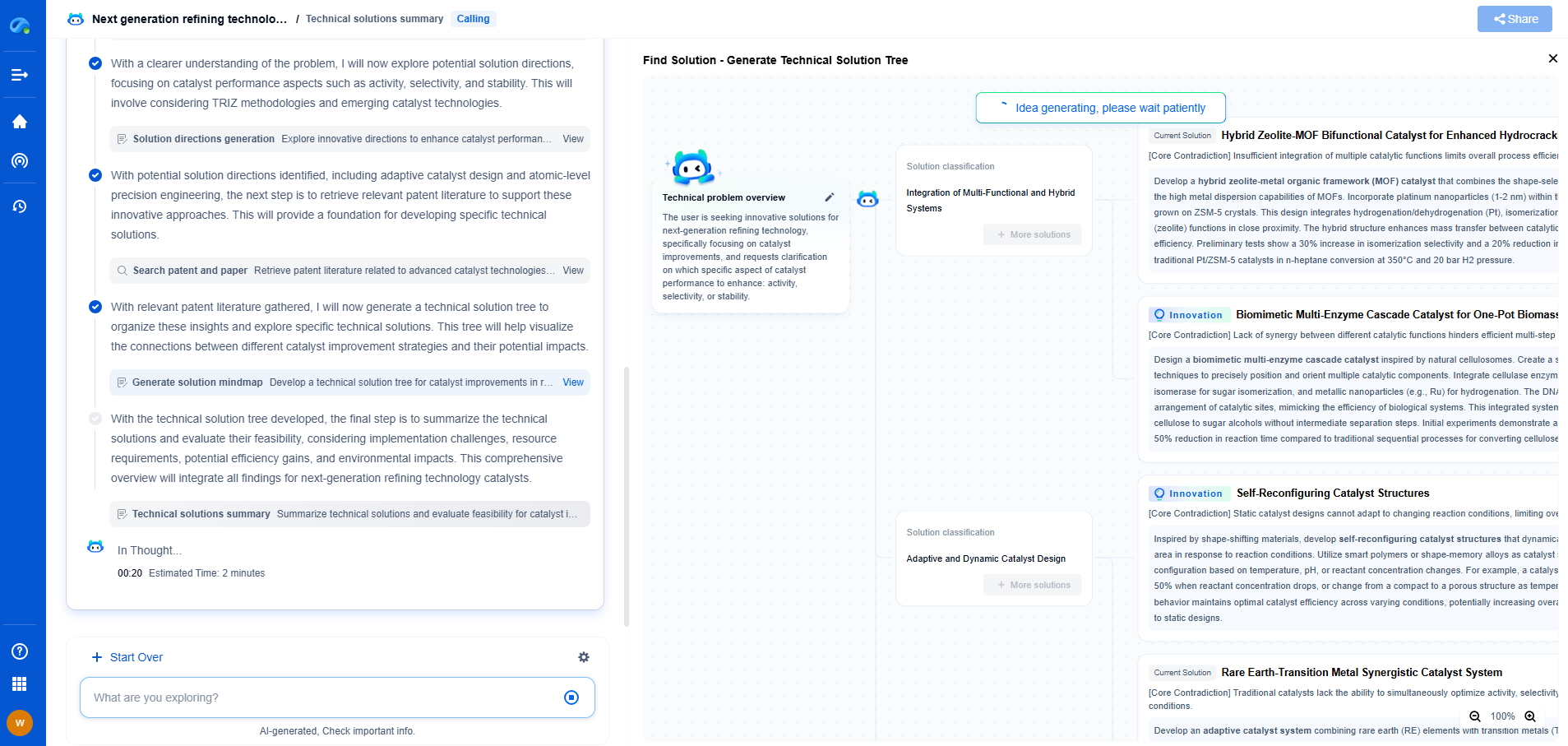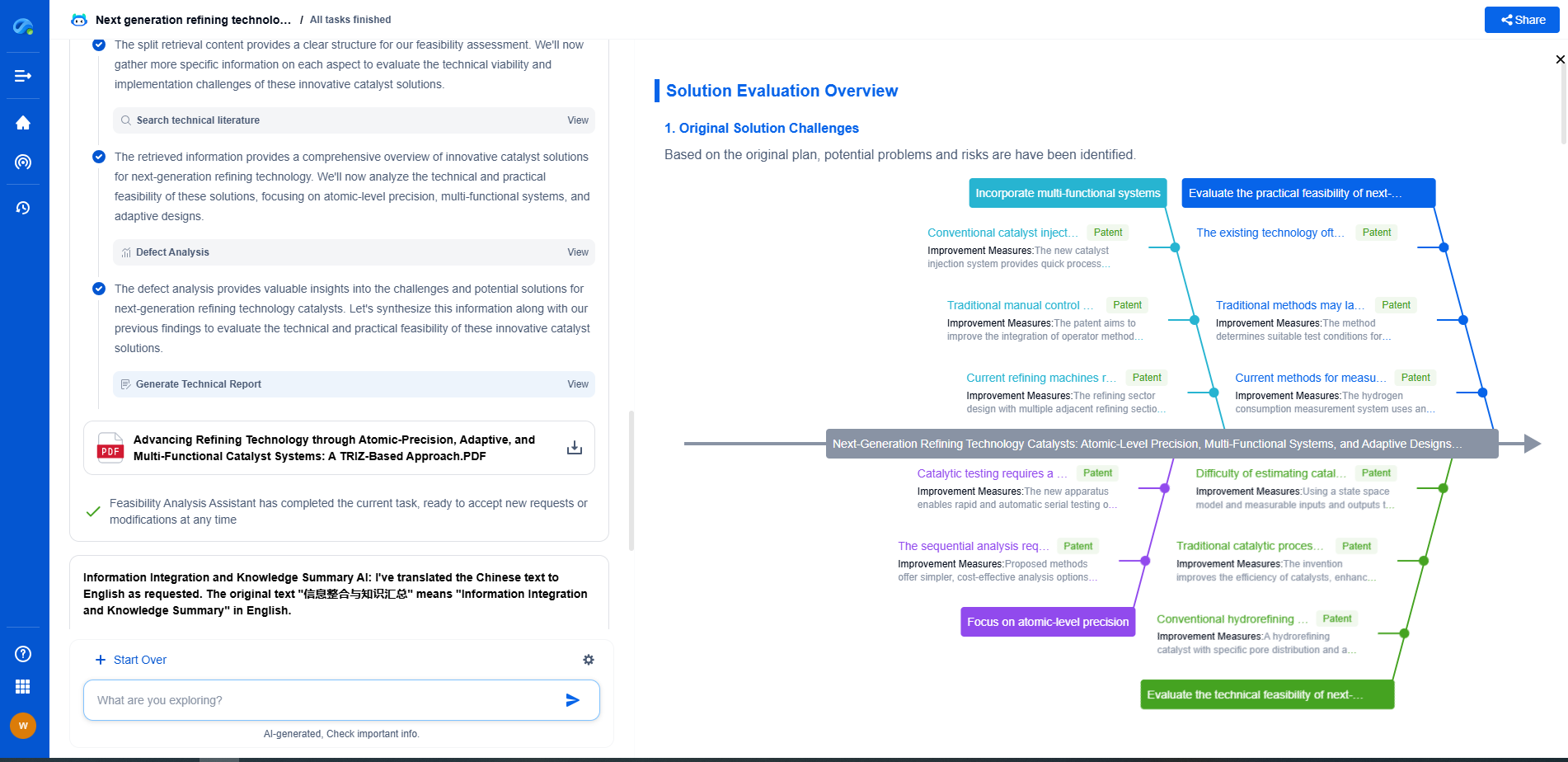What causes real-time data lag in automated rigs and how to fix it
JUN 20, 2025 |
In the modern landscape of industrial automation, automated rigs stand at the forefront of technological advancement. These systems are designed to operate with minimal human intervention, relying heavily on real-time data to make decisions and perform tasks efficiently. However, one of the persistent challenges in the operation of automated rigs is real-time data lag. Understanding the causes of this lag and knowing how to address them is critical for optimizing performance, ensuring safety, and maximizing the return on investment.
Causes of Real-Time Data Lag
1. Network Latency
Network latency is one of the most common causes of real-time data lag in automated rigs. Latency refers to the delay between the transmission and reception of data packets over a network. In complex industrial environments, data must often travel across vast distances and through multiple network nodes. Every hop introduces potential delays due to processing times, transmission speeds, and network congestion.
2. Inadequate Bandwidth
Bandwidth limitations can severely impact the flow of data. When an automated rig is operating, it generates and requires large volumes of data. If the network infrastructure cannot handle this data load efficiently, it results in data bottlenecks which manifest as lag. The higher the demand for data transmission, the more pronounced the lag becomes, particularly during peak operation times.
3. Data Processing Delays
Automated rigs rely on sophisticated algorithms to process data and make decisions. However, if the computational resources are inadequate or if the algorithms are not optimized, processing delays can occur. These delays can be due to insufficient CPU power, inefficient coding practices, or simply the sheer volume of data that needs to be processed in real-time.
4. Hardware Limitations
The performance of an automated rig is also dependent on the hardware components, such as sensors, controllers, and computing units. Outdated or malfunctioning hardware can introduce significant lags. Sensors that provide inaccurate or slowly updating data can cause delays in response times, leading to lag in the system.
5. Software Issues
Software glitches, bugs, and outdated versions can lead to instability and lag in data processing. In automated rigs, software plays a crucial role in integrating various components and ensuring smooth operation. Any issues within the software layer can ripple through the system, causing delays in data transmission and processing.
Strategies to Fix Real-Time Data Lag
1. Upgrade Network Infrastructure
To combat network latency and bandwidth issues, upgrading the network infrastructure is a crucial step. Implementing high-speed, low-latency networks such as fiber optics, and ensuring adequate bandwidth can significantly reduce data lag. Additionally, employing network optimization techniques, such as data compression and efficient routing protocols, can help in managing data flow more effectively.
2. Optimize Data Processing
Improving the efficiency of data processing is key to minimizing lag. This can be achieved by using more powerful computing resources and optimizing existing algorithms. Distributed computing and parallel processing techniques can also be employed to handle large datasets, ensuring that data is processed in a timely manner.
3. Regular Hardware Maintenance
Ensuring that all hardware components are in optimal working condition is essential. Regular maintenance and timely upgrades of sensors, controllers, and computing units can prevent hardware-induced lags. Implementing predictive maintenance strategies can help identify potential hardware issues before they result in significant delays.
4. Update and Debug Software
Regularly updating the software and addressing any bugs or glitches is imperative for the smooth operation of automated rigs. Continuous integration and deployment practices can ensure that software updates are rolled out seamlessly, minimizing potential disruptions. Additionally, thorough testing and debugging should be conducted to prevent software-induced lags.
5. Implement Real-Time Monitoring
Real-time monitoring systems can provide valuable insights into the operation of automated rigs. By continuously tracking performance metrics, operators can quickly identify and address the sources of data lag. Real-time analytics can also help in predicting potential bottlenecks, allowing for proactive measures to mitigate lag.
Conclusion
Real-time data lag in automated rigs is a multi-faceted issue that requires a comprehensive approach to address effectively. By understanding the underlying causes and implementing targeted strategies, operators can significantly enhance the performance and reliability of their systems. Reducing data lag not only improves operational efficiency but also enhances safety and boosts overall productivity. With the right tools and practices in place, automated rigs can operate at their full potential, driving innovation and success in the industrial sector.
Navigating the Complexities of Drilling Innovation? Let AI Do the Heavy Lifting
In an industry where subsurface conditions, materials science, and drilling dynamics evolve rapidly, staying ahead of technical innovation and protecting your intellectual property can be overwhelming.
Patsnap Eureka, our cutting-edge AI assistant, is built for R&D and IP professionals in high-tech industries like drilling technologies. Whether you're optimizing rotary steerable systems, evaluating high-temperature materials, or exploring next-gen automation in directional drilling, Eureka enables real-time analysis of the latest patents, technology landscapes, and competitive movements—all from one intelligent, intuitive platform.
Ready to accelerate your development cycle and make strategic decisions with confidence? Explore Patsnap Eureka today—where smart drilling starts with smarter insights.
- R&D
- Intellectual Property
- Life Sciences
- Materials
- Tech Scout
- Unparalleled Data Quality
- Higher Quality Content
- 60% Fewer Hallucinations
Browse by: Latest US Patents, China's latest patents, Technical Efficacy Thesaurus, Application Domain, Technology Topic, Popular Technical Reports.
© 2025 PatSnap. All rights reserved.Legal|Privacy policy|Modern Slavery Act Transparency Statement|Sitemap|About US| Contact US: help@patsnap.com

